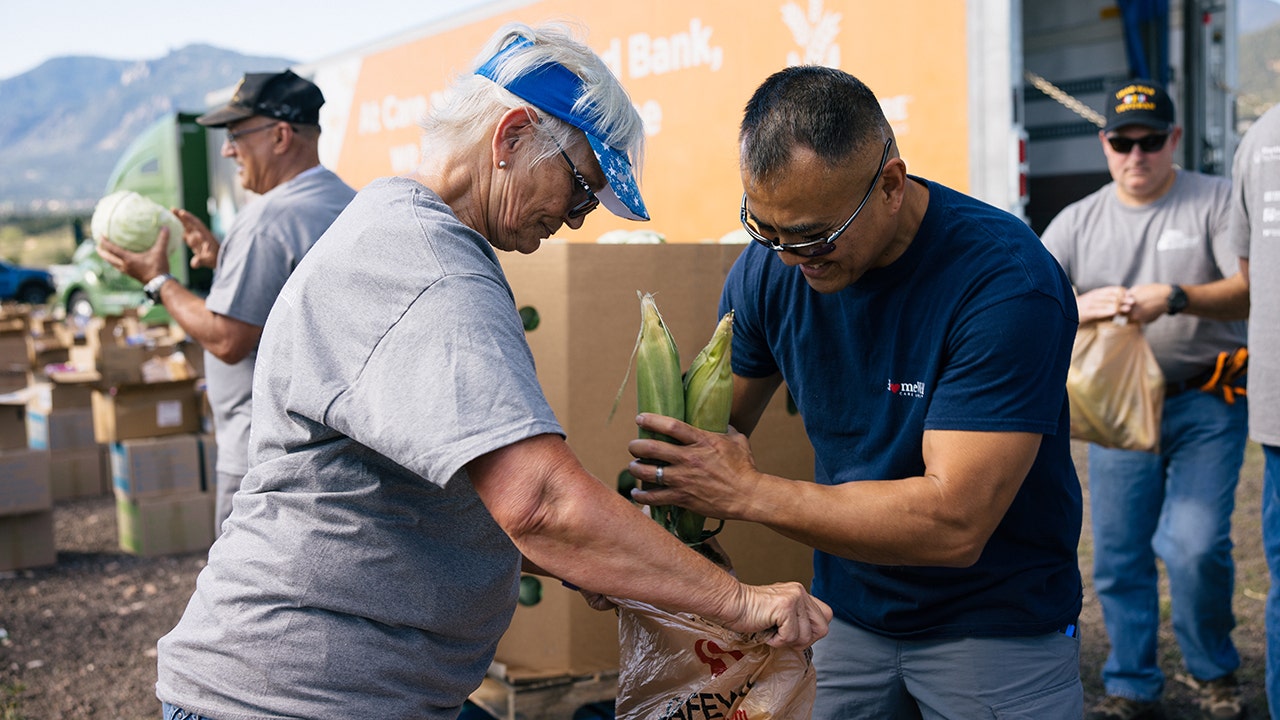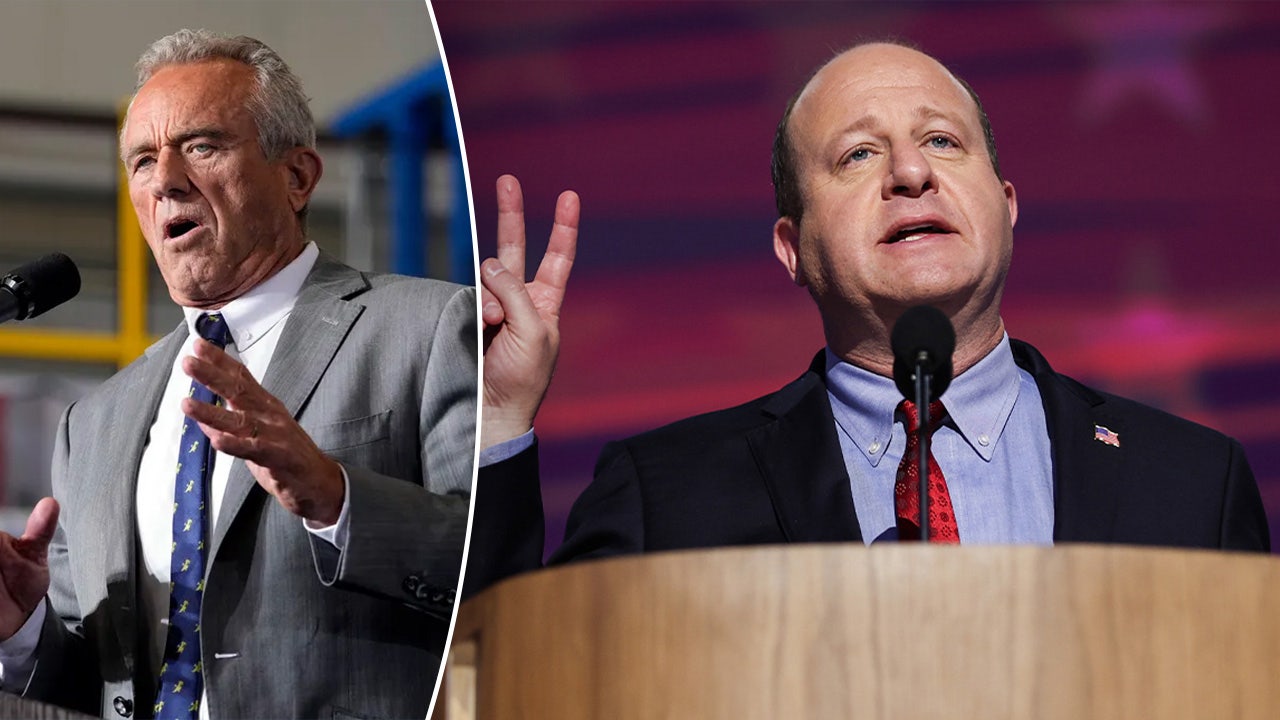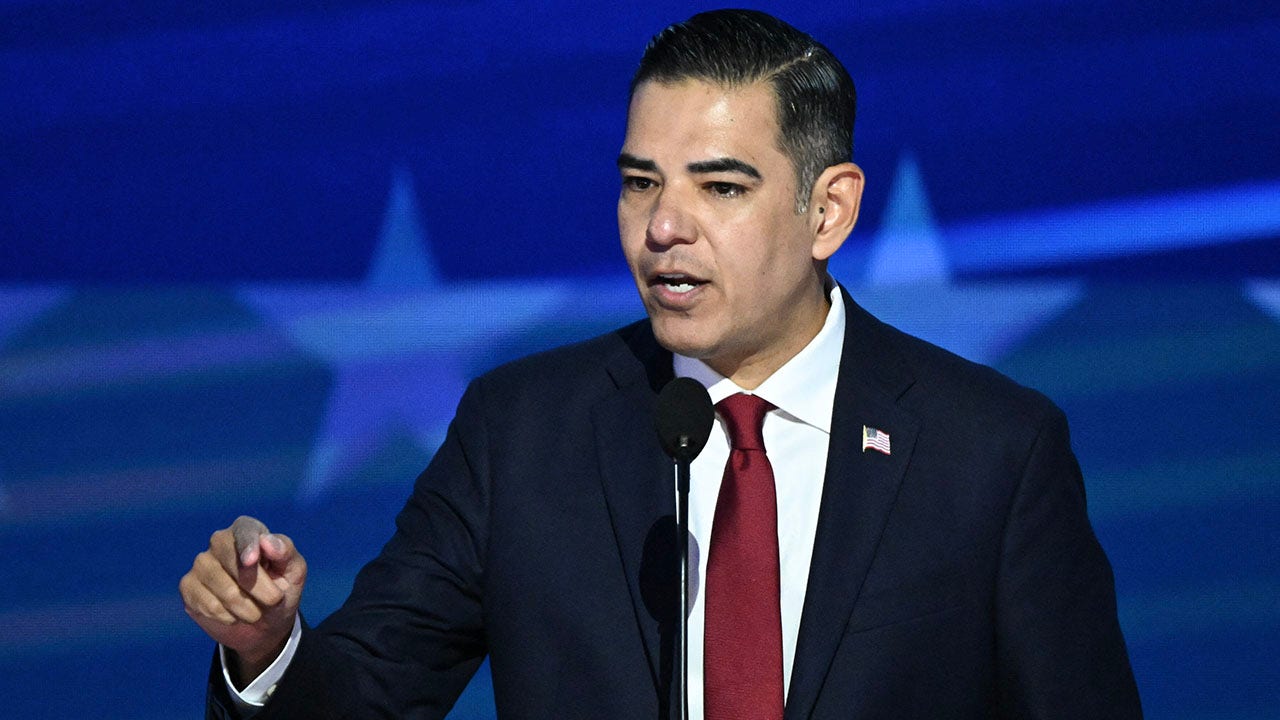As hunger numbers increase, food pantries in America more important than ever

Nearly one out of five children in the United States are food insecure, according to the latest report from the U.S. Department of Agriculture – an issue that Feeding America’s CEO said is something that could unite the country during these times of division.
“This is one of the things that we can all agree on at a time when we’re being torn apart in lots of different ways,” Claire Babineaux-Fontenot told Fox News Digital in a Zoom interview from Chicago, where Feeding America is headquartered. (See the video at the top of this article.)
“Feeding America is a network that spans the whole country, where we’re dedicated to ensuring that people have the food that they need to thrive,” she said.
EASIEST VEGETABLE STIR-FRY RECIPE EVER, SAYS FOUNDER OF LITTLE KITCHEN ACADEMY
“Let’s agree on this,” Babineaux-Fontenot said. “No child, no person, in this country needs to be food insecure, and we have the power [to do that].”
What America needs is “the will to do something about it,” said Babineaux-Fontenot, who has served as CEO of Feeding America since 2018.
The USDA released its annual food security report on Wednesday.
The report found that 47.4 million people in the United States were in “food-insecure households” in 2023, comprising 14.3% of the U.S. population. These figures represent a 6% increase over 2022.
Of that 47.4 million number, nearly 14 million are children – totaling 19.2% of children in the U.S.
‘ALL YOU CAN EAT’ PANCAKES RETURN TO IHOP FOR BACK-TO-SCHOOL SEASON, PLUS COOKING TIPS AND A RECIPE
The USDA defines a food secure house as one with “access by all people at all times to enough food for an active, healthy life.”
While these numbers may seem shocking, Babineaux-Fontenot said she was not surprised by them.
“There’s not one food banker across the country who would be surprised to learn that the numbers went up again,” she said. “And they went up again for the same reasons that we would have predicted.”

America has “so many resources,” Babineaux-Fontenot said — yet commodities have been cut by 45%.
Contrary to what some may assume, the people who seek assistance at food banks and food pantries are mostly not homeless and living on the streets, Babineaux-Fontenot said.
People facing hunger “are your neighbors. They’re my neighbors,” she said.
“Many people experiencing hunger have not one, sometimes two jobs, and they still are challenged and trying to make ends meet.”
“They’re hardworking, dedicated people who want the exact same things for their families that I want for mine.”
She went on, “Many people experiencing hunger have not one, sometimes two jobs, and they still are challenged and trying to make ends meet. And they can’t consistently get the food and the nutrition they need on the table for themselves and their kids.”
Since the start of the coronavirus pandemic in 2020, there has been an increase in what Babineaux-Fontenot called the “working class” turning to food pantries.

“The people who turn to food banks are people who make a bit too much to technically qualify for federal nutrition programs,” she said.
“So they turn to us, to the charitable food system, in search of the food and nutrition that they need for their families.”
‘Everything in between’
There’s “no category” of people in the United States that is completely without food insecurity or hunger, she said.
SURGING INFLATION CAUSES FOOD INSECURITY FOR WORKING FAMILIES AS FOOD BANKS STRUGGLE TO MEET DEMAND
“Men and women who serve in the military – active duty – as well as people who are veterans are experiencing hunger,” Babineaux-Fontenot said. “People in rural America are experiencing hunger. People in urban centers experience hunger and everything in between.”
“There is not one county in the whole United States of America … that does not have people within it that experience hunger.”
“There is not one county in the whole United States of America, no matter how rich that county is, that does not have people within it that experience hunger,” she said.
September is known as “Hunger Action Month,” Babineaux-Fontenot said, meaning “we pause and ask the American public to activate” around the issue of hunger in this country.
BREAKFAST IS SERVED AS HOMEMADE BEEF SAUSAGE BUNS OFFER A ‘DELICIOUS TWIST’
This can be done in many ways, she said – the most basic being simply to donate money to a local food bank or food pantry.
Financial donations “are so meaningful because $1 in the hands of our network can do a whole lot more than in the hands of the general public in terms of converting that into meals [for] people experiencing hunger,” she said.

Fundraising dollars have continued to decrease, she said, putting a further strain on these pantries.
Food donations are also appreciated.
“Right now, although the demand continues to increase, we have less and less food that we can provide,” she said.
For more Lifestyle articles, visit www.foxnews.com/lifestyle
And for those who cannot donate money or food, Babineaux-Fontenot said, even just speaking out on the issue can help.
“And then we need friends – people who use their voices to advocate on behalf of policies that really make a difference in the lives of people experiencing hunger,” she said.
Looking ahead, Babineaux-Fontenot believes that solving the issue of hunger can – and should – be a bipartisan issue.

“For instance, the child tax credit – I’m so thrilled to hear that both presidential candidates running right now agree that we should go back and do something more with the child tax credit,” she said.
There was a “46% decline in child poverty during the pandemic, when we increased the child tax credit (and) made it available to more families,” she said.
“These are the kinds of things that we see at food banks. We see the things that are impacting regular folk out there – working hard, trying to make a living and struggling, sometimes, to make ends meet.”
Read the full article here







